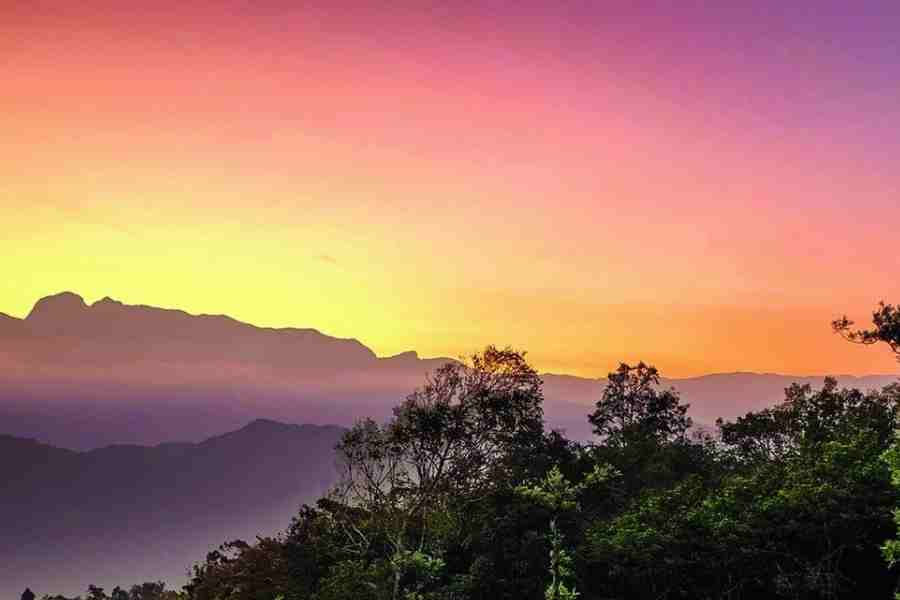Over the last four decades, I have taken part in countless academic seminars and literary festivals. The most recent took place last month, and was held in the southern hill town of Udhagamandalam, popularly known as Ooty. Billed as a “Conference for the Nilgiris in the Nilgiris”, it sought to envision a “bioculturally sustainable future” for this beautiful and vulnerable mountain district of Tamil Nadu. The speakers included the foremost social scientists and natural scientists who have worked in the region alongside citizen-activists, entrepreneurs, teachers, and tribal elders. In terms of diversity of participants and the quality of the presentations, this was one of the most enjoyable and educative seminars I have ever attended.
I have a personal connection to the Nilgiris. My father was born in Ooty and, as adults, my parents met and fell in love in that same town. However, I was myself born and raised at the other end of the subcontinent, in the foothills of the Garhwal Himalaya. It was in the interior hills of Garhwal that I did my first piece of sustained research. I actually first visited the Nilgiris only when I was forty. However, in the past quarter of a century, I have spent a great deal of time there, on shorter holidays with the family spread out over the years and in longer and more concentrated stretches during the coronavirus pandemic.
The Nilgiris are one part of a great mountain chain known as the Western Ghats; Garhwal one part of an even greater mountain chain known as the Himalaya. Listening to the talks and conversations at this “NilgiriScapes” seminar, I thought I could discern some historical parallels between the hills I knew so well in my youth and the hills I am coming to know better in my old age. These parallels extend across the precolonial, colonial, and postcolonial periods.
I do of course recognise the profound biocultural differences between the two regions. The inhabitants of the Nilgiris and Garhwal were — and are — dissimilar in terms of language, faith, culture, and cuisine. The landscapes of the two regions are very different in terms of their flora, fauna, soil types, and geological formations. Even so, in their modern ecological histories, there remain many similarities, as I shall now explain.
It was in the early 19th century that British colonialists first began to make their presence felt in both Garhwal and the Nilgiris. In each region when the foreigners came, they found four major forms of livelihood being practised by the hill communities — hunting and gathering, pastoralism, agriculture, and craft production. Both regions were largely self-sufficient economically, though not wholly so: the people of the Nilgiris trading with the plains of Kongu Nadu below, the people of Garhwal trading both with the Indo-Gangetic plains and across the high Himalaya with Tibet.
In both the Nilgiris and Garhwal, the local communities had a deep and organic connection with the natural world. They had learned to live and reproduce themselves within the boundaries set by nature. Indigenous knowledge about plants, soils, and climatic conditions was highly developed and embodied in their livelihood practices. At the same time, the worship of specific plants, rocks, and water bodies, and the setting aside of areas of untouched forests as sacred groves, reflected the profound humility towards nature displayed by these premodern communities.
The advent of the British raj marked a radical disruption in both these regions. At the level of ecology, there was a profound transformation in the landscape — which took the form of tea estates in the Nilgiris and of commercial forestry in the Himalaya. The planting and harvesting of tea in the one place and the planting and harvesting of pine in the other led to a major loss in biodiversity and environmental stability. At the level of society, both regions witnessed an influx of outsiders — labourers, officials, teachers, soldiers, pleasure-seekers, and others — as well as a steadily increasing stream of out-migration, as hill folk sought employment in the factories, homes, and offices in the plains. With the raj also came the creation of urban centres and ‘hill stations‘ such as Ooty and Mussoorie.
After Independence in 1947, the social and ecological reshaping of these regions further accelerated. The rivers of the hills were dammed for power, inundating forests and grasslands. With the expansion of the network of motorable roads, the flow of people and commodities in and out of the hills greatly intensified. The ‘development’ programmes of the postcolonial State brought in tens of thousands of government employees with their families. The expansion of the Indian middle class led to an exponential surge in tourism from the plains to the hills. These tourists brought with them opportunities for local employment and income generation, but also drunkenness, brawls, traffic jams and, not least, tonnes of non-biodegradable waste, which they carelessly threw along roadsides and into rivers and forests too.
By the 1970s, the ecological and social crises caused by deforestation in Garhwal was acute enough to have given birth to the Chipko movement. By the 1980s, the Nilgiris had its first citizens’ groups mobilising people for action. These initiatives were timely, for the ecological integrity of both Garhwal and the Nilgiris was threatened from a variety of directions — deforestation, soil erosion, toxic wastes, the invasion of exotic weeds and of too many tourists. In the years that followed, an unequal battle has been waged between those working for a sustainable future for their hills and those seeking to undermine it.
The challenge of climate change has of course made these questions even more urgent. It strikes me here that in three respects the southern hills of my old age are more fortunate than the northern hills of my youth. The first reason is ecological; because the rivers of the Garhwal Himalaya are snow-fed and descend from greater heights, they are far more likely to attract costly and destructive hydro-electric projects. There are indeed a few hydel projects in the Nilgiris, but these have not caused remotely the sort of damage that the large and apparently ever-growing network of dams in the Himalaya has done.
The second source of good luck for the Nilgiris is geostrategic. Thus, while these southern hills can be approached from Kerala, Tamil Nadu and Karnataka, these are all states of the Indian Union. On the other hand, Garhwal borders Tibet, and the fragile relations between India and China have necessitated the building of wide roads and the conveying of large numbers of troops, with negative spill-over effects for nature and for society.
The third piece of good fortune is religious in origin. While the Nilgiris are home to many small and locally venerated temples, shrines, mosques, and churches, none of these attracts visitors from outside the district. On the other hand, Garhwal is home to four of the holiest and most visited temples in India, the so-called Char Dham, namely, Badrinath, Kedarnath, Gangotri, and Jamnotri. So long as pilgrimage to these places was conducted on foot and by horse-back this was no problem; but now that religious tourism has expanded by leaps and bounds, and apparently requires the building of four-lane highways to accommodate it, the ecological and social threats it poses are immense.
I have deep personal attachments to Garhwal and to the Nilgiris. I would therefore wish for a ‘bioculturally sustainable future’ for both these hill regions. Yet, on the available evidence, it seems that the prospects for such a future for Garhwal are close to non-existent. To safeguard and renew the socio-ecological integrity of the Nilgiris will no doubt be an arduous and uphill battle, but at least it can be imbued with a measure of hope and possibility. A fruitful collaboration among citizens, scientists, socially-conscious entrepreneurs and public-spirited government officials can yet put in place strategies for restoring the sholas and the forests, for de-chemicalising plantation agriculture, for making tourism more socially inclusive and less resource-intensive, for cleaning and reviving water bodies.
This column is being published on the weekend of the grand G20 summit held in Delhi, when leaders of the most populous, prosperous and powerful nations will meet to discuss the state of the world, accompanied by their boosters and cheerleaders in the media. No doubt some high-minded and piously-worded declarations will be issued at the end of the meeting. But whether this G20 meeting will materially improve the prospects of life on earth is entirely unlikely. For while thinking globally is all very well, acting locally — in the spirit of the NilgiriScapes conference held in Ooty last month — may be even more important for the future of humanity and of nature as well.
ramachandraguha@yahoo.in










